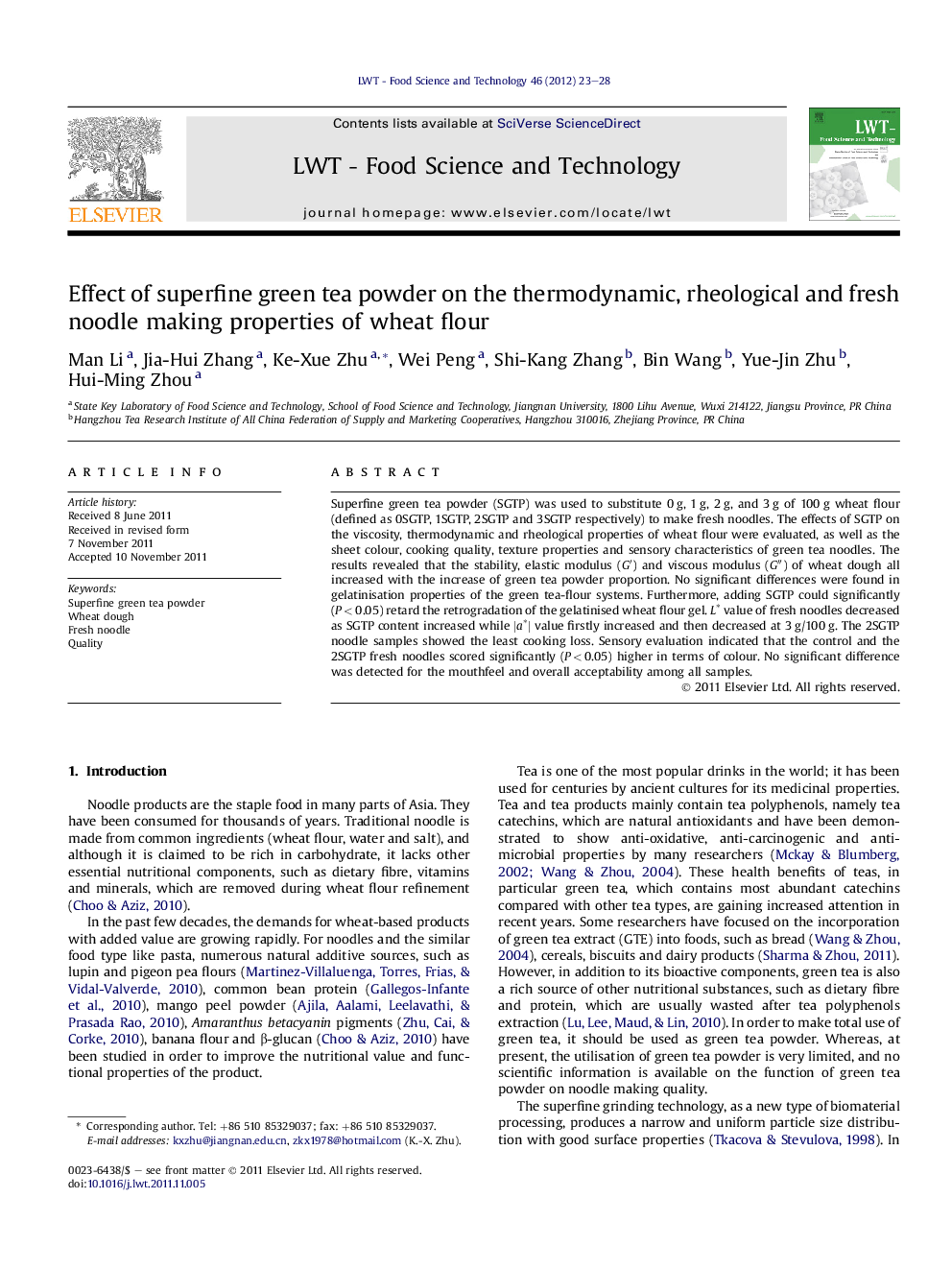| Article ID | Journal | Published Year | Pages | File Type |
|---|---|---|---|---|
| 6405339 | LWT - Food Science and Technology | 2012 | 6 Pages |
Superfine green tea powder (SGTP) was used to substitute 0Â g, 1Â g, 2Â g, and 3Â g of 100Â g wheat flour (defined as 0SGTP, 1SGTP, 2SGTP and 3SGTP respectively) to make fresh noodles. The effects of SGTP on the viscosity, thermodynamic and rheological properties of wheat flour were evaluated, as well as the sheet colour, cooking quality, texture properties and sensory characteristics of green tea noodles. The results revealed that the stability, elastic modulus (Gâ²) and viscous modulus (Gâ³) of wheat dough all increased with the increase of green tea powder proportion. No significant differences were found in gelatinisation properties of the green tea-flour systems. Furthermore, adding SGTP could significantly (PÂ <Â 0.05) retard the retrogradation of the gelatinised wheat flour gel. Lâ value of fresh noodles decreased as SGTP content increased while |aâ| value firstly increased and then decreased at 3Â g/100Â g. The 2SGTP noodle samples showed the least cooking loss. Sensory evaluation indicated that the control and the 2SGTP fresh noodles scored significantly (PÂ <Â 0.05) higher in terms of colour. No significant difference was detected for the mouthfeel and overall acceptability among all samples.
⺠SGTP was successfully added into fresh noodles as a new type of nature additive. ⺠SGTP induced a more stable and viscoelastic wheat dough. ⺠Adding SGTP significantly changed noodle colour and reduced flour gel retrogradation. ⺠Addition of SGTP did not significantly affect the overall acceptability of noodles.
